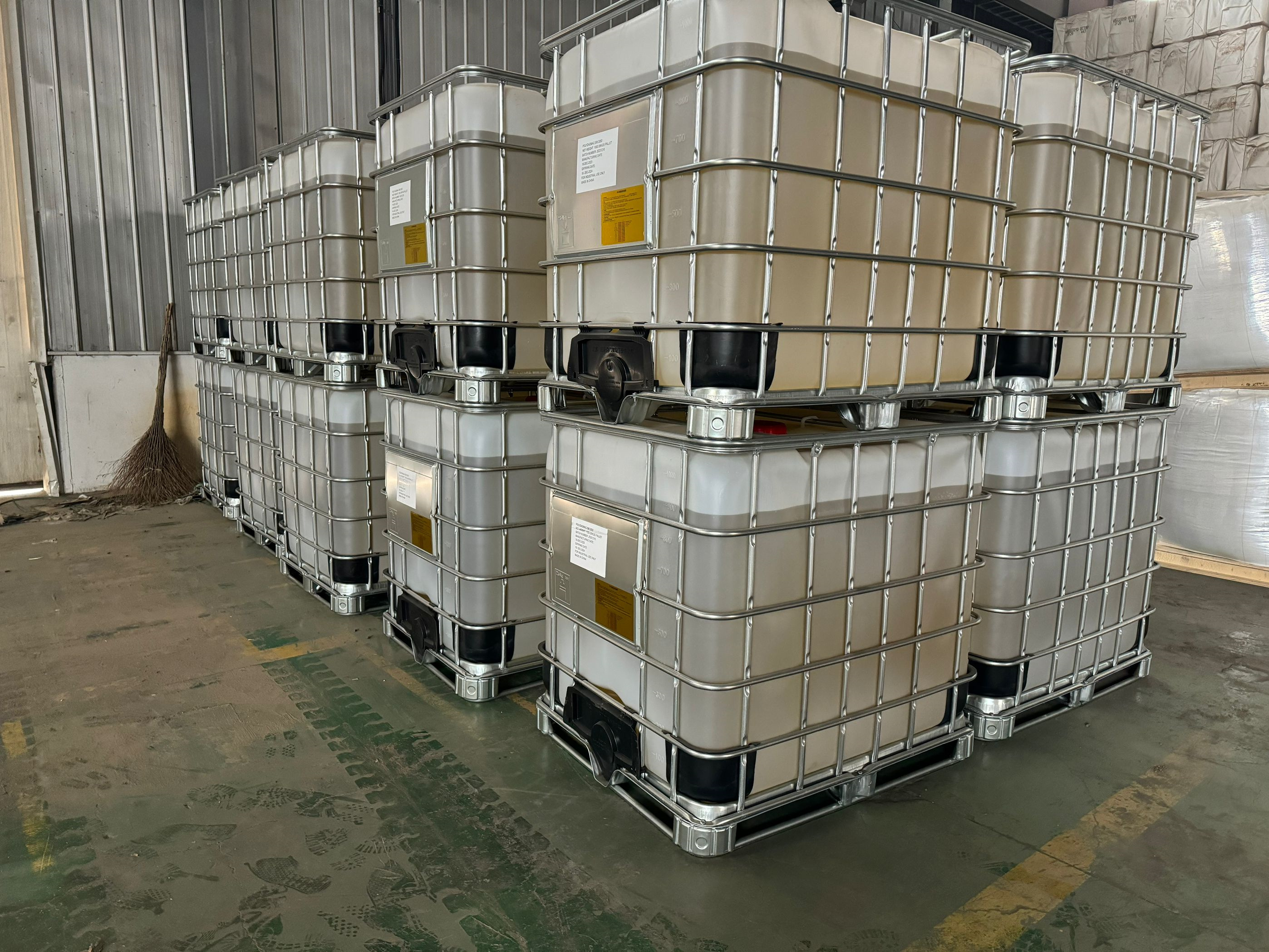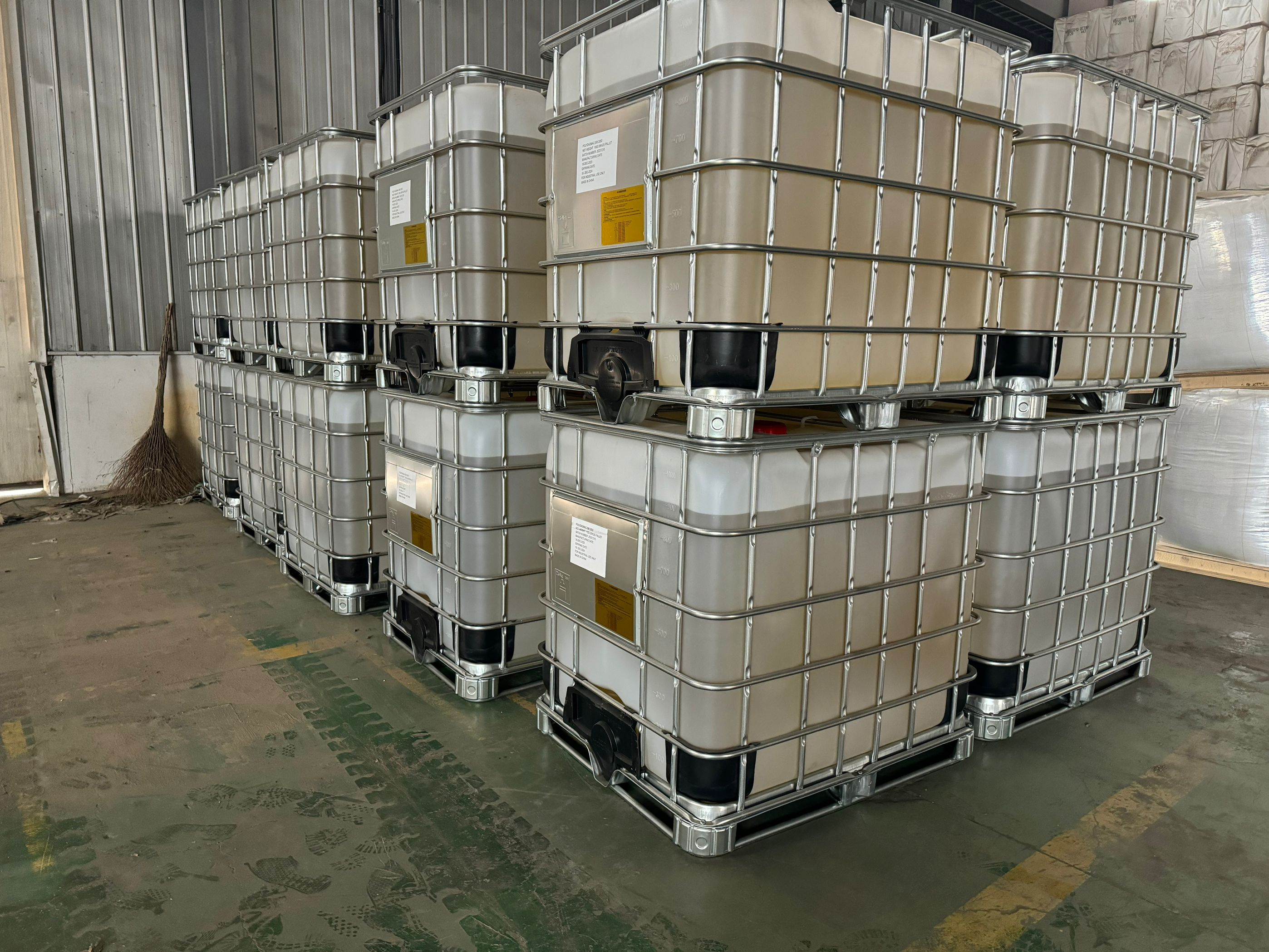Polyamine, a class of cationic polymers with multiple amine groups, finds broad application across various industries due to its strong coagulating, flocculating, and binding abilities.
polyamine(LT-7991)for water treatment can be replaced by asiafloc
Material
- polyamine
Color
- light yellow
Application
- water treatment ,mineral processing
Certificate
- ISO9001 ,ISO14001
Place of Origin
- China
Other Names
- polyamine
Brand Name
- asiafloc
Usage
- water treatment ,mineral processing ,textile ,oil and gas
Polyamine, a class of cationic polymers with multiple amine groups, finds broad application across various industries due to its strong coagulating, flocculating, and binding abilities. Its highly cationic nature makes it particularly effective in neutralizing negatively charged particles, facilitating particle aggregation, and improving separation processes. The following overview explores polyamine's applications in water treatment, papermaking, oil and gas, textile processing, personal care, and agriculture, detailing how this versatile polymer contributes to each industry.
1. Water Treatment
One of the primary applications of polyamine is in water treatment, where it serves as an effective coagulant and flocculant. This is essential for both drinking water and wastewater treatment.
a. Drinking Water Treatment
Polyamine is commonly used in the purification of drinking water. Its cationic charge effectively neutralizes the negative charges on suspended particles and organic matter, leading to coagulation and removal.
By binding with contaminants like natural organic matter (NOM) and suspended solids, polyamine aids in reducing turbidity, color, and total organic carbon (TOC) levels in water, enhancing clarity and safety.
Unlike inorganic coagulants, polyamine is less likely to increase residual metal content in water, making it safer and more environmentally friendly.
b. Wastewater Treatment
In wastewater treatment, polyamine is widely applied to remove suspended solids, organic pollutants, and contaminants from municipal and industrial effluents.
Its high positive charge density makes it effective for coagulating and flocculating colloidal particles and organic matter, which improves the efficiency of sedimentation and filtration processes.
Additionally, polyamine can enhance sludge dewatering by creating larger, more stable flocs, which reduce sludge volume and make it easier to dispose of or process.
c. Industrial Effluent Treatment
Polyamine is valuable in treating industrial effluents from sectors like food processing, pharmaceuticals, and textiles. These effluents often contain dyes, oils, and other contaminants that need effective removal.
Polyamine aids in reducing the chemical oxygen demand (COD) and biological oxygen demand (BOD) of industrial effluents, making the water safer for discharge and less harmful to ecosystems.
2. Papermaking Industry
Polyamine is extensively used in the papermaking industry to improve product quality, process efficiency, and environmental sustainability. It acts as a retention and drainage aid, charge control agent, and wet-strength additive.
a. Retention and Drainage Aid
Polyamine enhances the retention of fillers, pigments, and fine fibers within the paper matrix, which leads to better paper structure and strength.
By neutralizing the charges on pulp particles, polyamine promotes particle aggregation, preventing the loss of valuable fibers and additives and improving the efficiency of the papermaking process.
b. Charge Control Agent
Polyamine is used to balance the electrostatic charges in pulp suspensions. This prevents dispersion of negatively charged fibers and additives, ensuring better paper formation and uniformity.
Charge control helps reduce stickies and pitch deposits, which can lead to downtime and increased maintenance costs.
c. Wet-Strength Additive
Polyamine is sometimes used to enhance the wet strength of paper products, making them more durable when exposed to moisture. This application is particularly useful for packaging, tissue paper, and other products that may come into contact with water.
3. Oil and Gas Industry
Polyamine is widely applied in the oil and gas industry for water treatment, drilling, and enhanced oil recovery. Its effectiveness in stabilizing drilling fluids and treating produced water makes it a valuable chemical in this sector.
a. Drilling Fluid Stabilization
In drilling operations, polyamine acts as a stabilizing agent for drilling fluids by binding to solids and preventing their agglomeration. This helps maintain the fluid’s properties, reducing equipment wear and optimizing drilling efficiency.
It also aids in preventing the formation of scale on equipment, which reduces maintenance costs and prolongs equipment life.
b. Produced Water Treatment
Produced water from oil and gas extraction is often contaminated with oils, salts, and suspended solids. Polyamine is used to coagulate and flocculate these impurities, allowing them to be separated more easily.
The treatment of produced water with polyamine makes it safer for discharge or reuse, reducing the environmental impact of oilfield operations.
c. Enhanced Oil Recovery
Polyamine can also be used in enhanced oil recovery (EOR) techniques, where it helps in stabilizing oil-water emulsions and reducing water-oil interfacial tension, making it easier to extract oil from reservoirs.
4. Textile Industry
In the textile industry, polyamine is valued for its role in wastewater treatment, dye fixation, and fabric softening, contributing to both product quality and sustainability.
a. Wastewater Treatment
Textile wastewater contains dyes, chemicals, and organic matter that need effective treatment before discharge. Polyamine is used to coagulate and flocculate dye particles and other pollutants, enabling their removal from the water.
This treatment reduces the color and COD/BOD levels of textile wastewater, helping textile manufacturers meet environmental regulations and minimize their impact on local water bodies.
b. Dye Fixing Agent
Polyamine is used as a dye-fixing agent, particularly with reactive dyes, to enhance colorfastness and prevent dye bleeding. This helps in achieving brighter colors that are more resistant to fading or washing out.
This application is especially useful for fabrics that require high wash fastness, such as uniforms, towels, and other high-use textiles.
c. Fabric Softening and Sizing
Polyamine can be used in fabric finishing processes to enhance fabric softness and improve the texture. In textile sizing, it strengthens the fibers, making them more durable during weaving and processing.
5. Personal Care Products
Polyamine is used in personal care products due to its conditioning, antimicrobial, and film-forming properties, making it beneficial in products for hair and skin care.
a. Hair Care
In shampoos, conditioners, and styling products, polyamine acts as a conditioning agent. It reduces frizz, enhances smoothness, and provides a protective film that improves the appearance of hair.
By binding to hair strands, polyamine helps retain moisture and imparts shine, giving hair a healthy, polished look.
b. Skin Care and Antimicrobial Agent
In skin care formulations, polyamine may be used as an antimicrobial agent, providing mild protection against bacterial growth.
It also helps improve product consistency and enhances the binding of ingredients, making formulations smoother and more pleasant to apply.
6. Agriculture
Polyamine’s applications in agriculture primarily involve soil conditioning, nutrient retention, and agricultural wastewater treatment, which contribute to soil health and sustainable farming.
a. Soil Conditioning
Polyamine is sometimes used as a soil conditioner to improve soil structure, prevent erosion, and enhance water retention. By binding soil particles, it improves soil aggregation and increases resistance to compaction, making it more suitable for plant growth.
This application is particularly useful in arid regions where water retention is critical.
b. Nutrient Retention
In certain formulations, polyamine is used to retain essential nutrients in the soil by binding to negatively charged soil particles. This reduces nutrient leaching and improves the efficiency of fertilizers, promoting sustainable agricultural practices.
c. Agricultural Wastewater Treatment
Agricultural runoff and wastewater often contain organic materials, pesticides, and other pollutants. Polyamine can be used to treat this water by coagulating and removing contaminants, making it safer for reuse in irrigation or for discharge into the environment.
7. Mining and Mineral Processing
Polyamine is also valuable in the mining industry for its role in separating and processing ores. Its use in flocculation, dust control, and tailings management enhances mining operations and reduces environmental impacts.
a. Flocculation for Ore Separation
In mineral processing, polyamine is added to promote flocculation, enabling the efficient separation of valuable minerals from waste rock. This process enhances the recovery rate and quality of extracted minerals.
b. Dust Control and Tailings Management
Polyamine is sometimes applied in dust control formulations to minimize airborne particles, reducing health risks and maintaining a safer work environment.
It is also used to consolidate tailings, the byproduct of mineral processing, making them easier to manage and store, which reduces the environmental footprint of mining operations.
8. Pool and Spa Water Treatment
In recreational water treatment, polyamine is used to improve water clarity and reduce chlorine demand, ensuring safe and clean water for swimming pools and spas.
Water Clarity: In pools and spas, polyamine acts as a clarifying agent by coagulating fine particles, oils, and organic contaminants. This keeps the water clear and visually appealing.
Chlorine Demand Reduction: By removing organic contaminants from the water, polyamine helps reduce chlorine demand, which minimizes potential irritation to swimmers and reduces chlorine-related odors.






